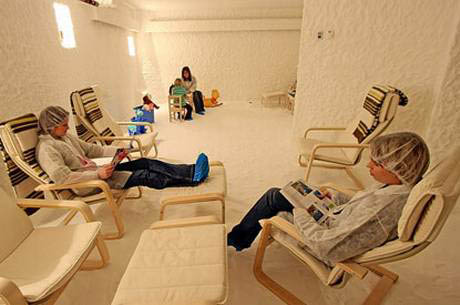
IMAGE: The Wandsworth Salt Cave, as shown in the London Evening Standard.
Salt, despite its long and distinguished history, not to mention its biochemical importance, is usually seen as a threat. Public health agencies across the developed world urge us to cut down our salt consumption, mounting campaigns warning of hidden salts and high blood pressure.
However, it seems that in architectural form, salt may have medicinal properties. An article in the Guardian earlier this week described journalist Viv Groskop’s trip to the Salt Cave of South London, one of a handful of salt caves springing up across the UK.
The cave claims to be the only effective “drug-free treatment method” for respiratory disorders including asthma, bronchitis, and sinusitis, reporting that: “Patients normally stop using their antibiotics, corticosteroid, inhalers, antihistamine and other drugs. Not because we ask them but because they become symptomless.”

IMAGE: Guardian journalist Viv Groskop in the salt cave. Photo by Frank Baron.
Salt crystals encrust the walls and floor of what otherwise looks like a dentist’s waiting room, with patients – wearing hairnets and bootees – leafing idly through magazines under fluourescent light. According to the Guardian,
The “cave” is a bit like a salty igloo. There are salt drifts everywhere, underfoot and lining the walls.
I’m immediately reminded of Roger Hiorn’s incredible 2008 artwork, Seizure. This crystalline cave, also in South London, was made by sealing up a bedsit in a condemned block of flats, pumping in 70,000 litres of copper sulphate solution, letting it cool, and then draining out the dregs after a fortnight. Visitors, including myself, queued up to put on wellies and gloves, and crunch through Flat 159, in awe at its transformation from dingy council housing to the midnight-blue, crystalline interior of a geode – an alien Ballardian mineralogical invasion at the scale of a particularly pokey human dwelling.
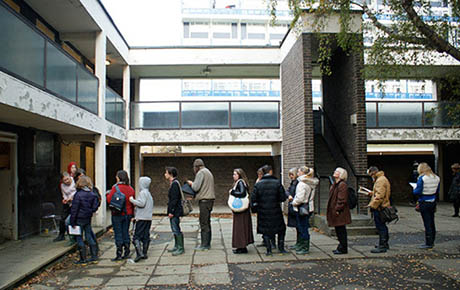
IMAGE: Queuing to enter Flat 159, in a derelict block of council housing near Elephant & Castle. Photo from London Unlike.
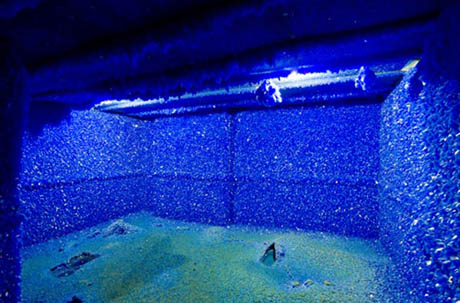
IMAGE: Roger Hiorns’ Seizure 2008. Photo courtesy Corvi-Mora, London.
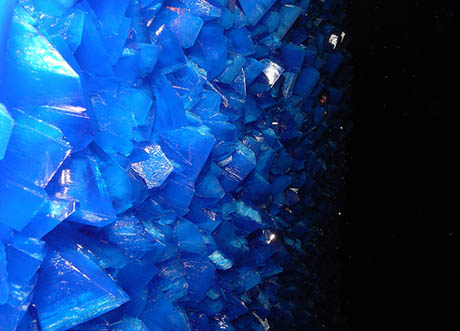
IMAGE: Seizure close-up, courtesy of Flickr user Aliceson. For a full 360º view of the installation, check out Keith Martin’s interactive panorama.
As it happens, the medicinal magic of the Wandsworth Salt Cave does not reside in its two tonnes of salty décor: it is instead created by a “microclimate generator,” which appears to be a glorified aerosol spraying finely milled sodium chloride into the air. This explanation of the cave’s mechanics is from the Salt Cave’s website (note: your results may vary):
The air coming from the microclimate-generator is ionized and saturated with a natural substance – a low concentration of curative highly dispersed aerosol of dry saline (salt). Patients sit in an artificial salt cave, breathe in the dry agent, which is immediately transported to the smallest bronchia and to other parts of the respiratory tract. Once in place it dissolves and attracts the small impurities which are later either coughed up by the patient or which leave the organism during the metabolic processes via the bloodstream.
Treatment in underground salt caves and mines dates back to nineteenth-century Poland, with salt cave sessions, or speleotherapy, available on prescription in many former Eastern Bloc countries. Jochen Duckeck, who maintains a website dedicated to showcaves, notes that “speleotherapy had a sort of gold rush in the last decade.”
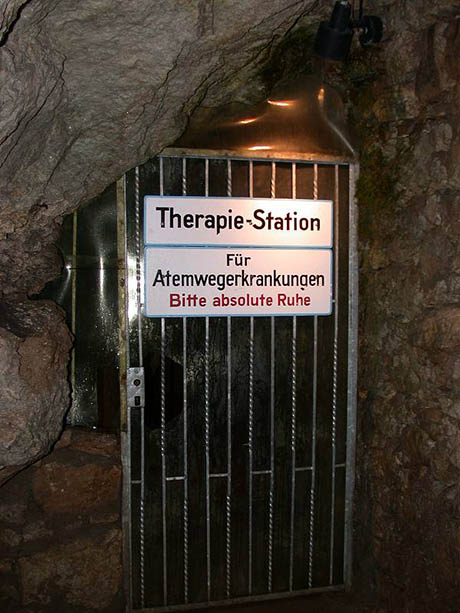
IMAGE: Entrance to the part of the Teufelshöhle showcave reserved for German clinical trials of speleotherapy’s effectiveness. Photo by Jochen Duckeck.
Fueled by the rising demand, enterprising companies have begun to recreate salt cave microclimates above ground. In Chicago, the Polish community enjoys imported Crimean salt, while Vermonters tout the benefits of the pink Himalayan variety.
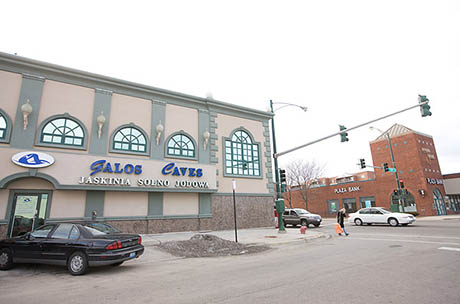
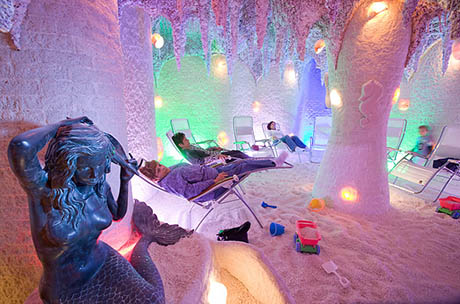
IMAGES: The unprepossessing exterior and Vegas-inspired interior of the Galos Salt Cave in Chicago, from a Time Magazine slideshow by photographer Saverio Truglia.
Meanwhile, several companies will transform your living room into a salt cave, or set up a portable salt cave in your back garden, whether it be for personal therapeutic use or commercial purposes. As one Czech company boldly declares:
We are prepared to transform your cellar or any other room into the salt cave. You and also your customers are going to be certainly satisfied with it. Each salt cave is original and extraordinary.
Meanwhile, at Galos Spa in Chicago, patrons can even dine in a salt cave – a concept that combines New-Age healing, culinary seasoning, and mineralogical sensorium.
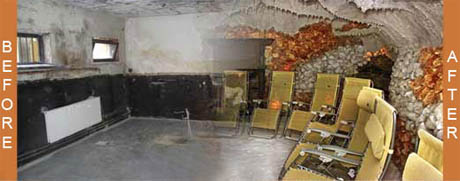
IMAGE: Your basement, reimagined as a salt cave. Photo from a salt cave construction company based in the Czech Republic.
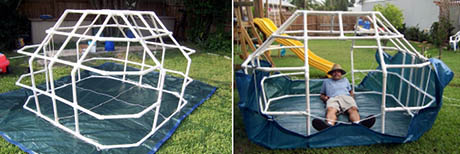
IMAGE: The framework upon which to construct your own portable salt cave, available from the Florida-based Silesia Group, Inc. At their website, we read that: “Strong 1 inch PVC pipes are used for the frame of our Portable Salt Spas. Three layers cover the frame. Heat barrier protects from Sun Heat or Cold temperatures. Tyvek-like material protects from strong storms ripping the wall protection. Camouflage from US Military protects from water, snow and visibility.”
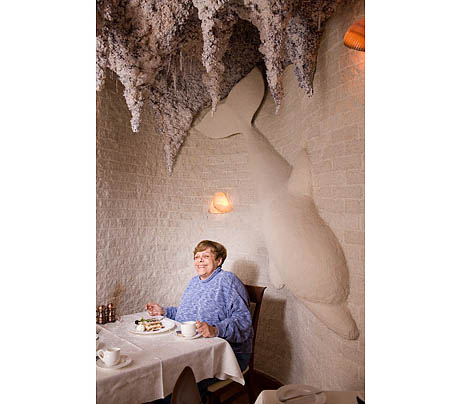
IMAGE: A separate cave in Chicago houses the “A La Carte” restaurant. Photo for Time Magazine by Saverio Truglia.
It seems only appropriate to end by quoting Ballard’s Crystal World:
At this rate of progress at least a third of the earth’s surface will be affected by the end of the next decade, and a score of the world’s capital cities petrified beneath layers of prismatic crystal, […] a vision materialised from St. John the Divine.

